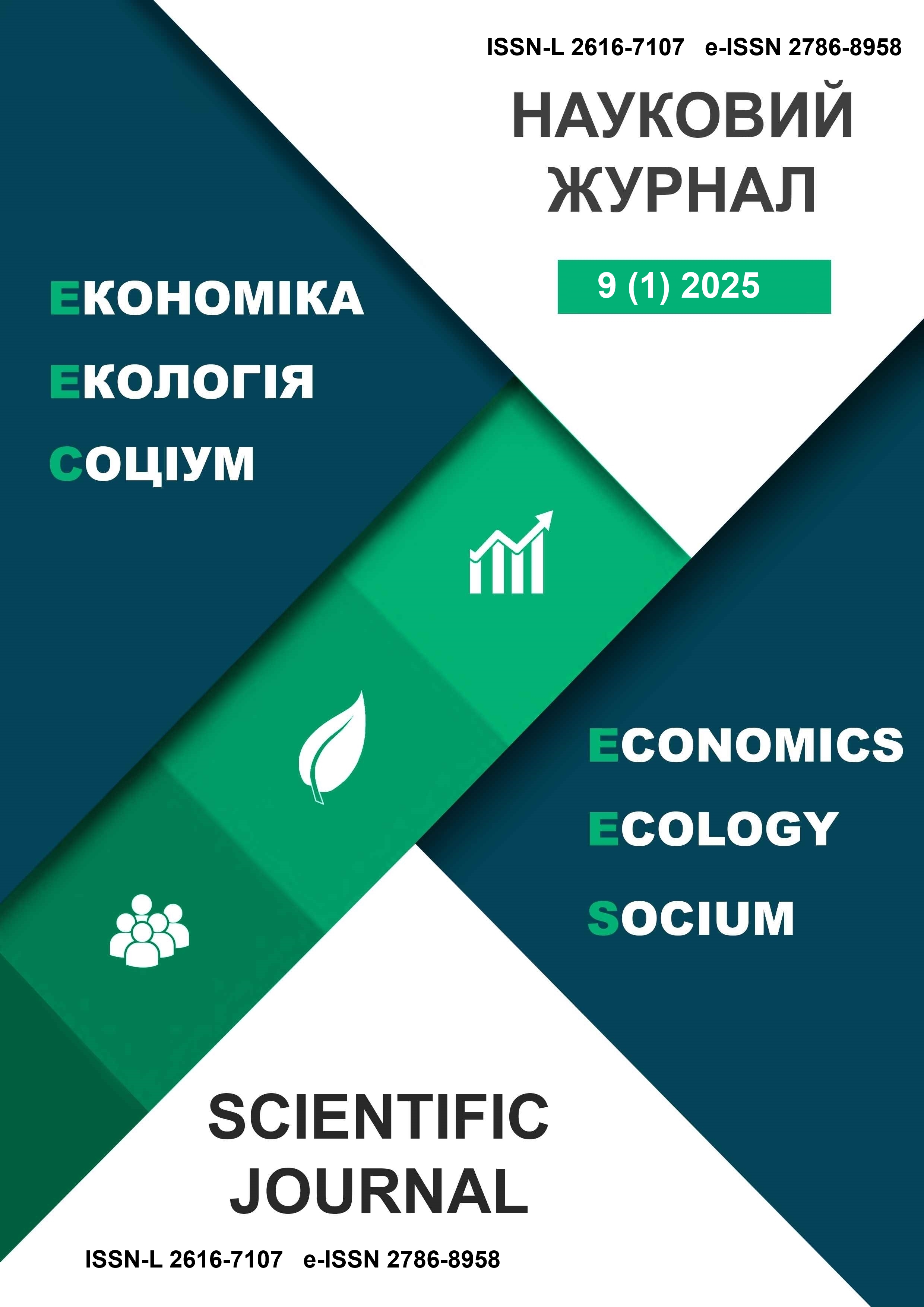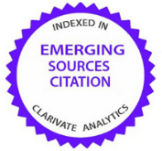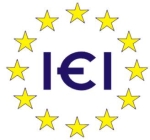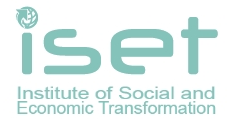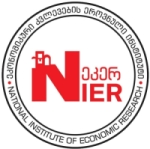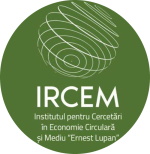Financial Market Regulation and Monetary Policy on Financial Stress Management in the National Economy
Abstract
Introduction. Neutralising the dynamic threats of war and economic crises and reducing the stress index for the country's financial system requires prompt action from the regulator. This allows financial market participants to reduce the stress index of the country's financial system. However, dynamic changes and the lag in time for the introduction of regulatory actions create challenging conditions for the activities of financial market participants, which determines the relevance of studying the functioning of Ukrainian financial markets.
Aim and tasks. This study aims to identify the key indicators of financial market conditions and the level of effectiveness of regulatory influence on these indicators.
Results. It is indicated that changes in the conditions for the functioning of the Ukrainian financial market in 2022-2023, with a reduction in the profitability of financial market participants by 152%, an increase in the share of non-performing loans by 19%, and a reduction in funds in banks’ correspondent accounts only for the first quarter of 2022 by 30%, led to an urgent need for regulatory action. These actions increased the liquidity coverage ratio by 3.27 times and reduced the Financial Stress Index by 59.79%. Simultaneously, the long-term liquidity ratio increased by only 7%, indicating uneven liquidity dynamics. A cumulative negative effect is noted, even when using the regulator's monetary policy instruments for 2022-2023. The money supply increased by 21.03%, the monetary base increased by 25.77%, and the volume of cash outside banks increased by 8.24%. This necessitates strict control over capital movements, taking into account the impact of this factor on the reduction in the activity of market participants.
Conclusions. The directions of the monetary policy of the regulator of Ukraine are indicated, in particular, increasing the level of lending to financial market participants, solving the problem of liquidity surplus in banks, and regulating relative prices, which contributes to reducing the level of financial stress. This indicates that the activities of financial intermediaries in martial law conditions acquire new significance as a damper of fluctuations in financial market risks, particularly the risks of financial transactions. This indicates that the financial market has not acquired a proper level of stability, and the stress index fluctuated up to 65% of the average value for the study period.
Keywords:
financial market, banking management, monetary base, interest rate, financial intermediaries.References
Bernardelli, M., Korzeb, Z., Niedziółka, P., & Waliszewski, K. (2023). Channels for the impact of the war in Ukraine on the commercial banking sector in Poland – First results of the study. Contemporary Economics, 17(2), 142–173. https://doi.org/10.5709/ce.1897-9254.504
Devereux, M. B., & Yu, C. (2019). Evaluating the role of capital controls and monetary policy in emerging market crises. Journal of International Money and Finance, 95, 189–211. https://doi.org/10.1016/j.jimonfin.2018.06.009
Garbowski, M., Mironova, D., Perevozova, I., Khrushch, N., & Gudz, I. (2019). Influence of IPO on macroeconomic security of countries. Journal of Security and Sustainability Issues, 8(4), 841–853. https://doi.org/10.9770/jssi.2019.8.4(24)
Haas, R. D., & Pivovarsky, A. (2023). The future of finance in post-war Ukraine. Vox Ukraine. https://voxukraine.org/en/the-future-of-finance-in-post-war-ukraine
Independent Association of Banks of Ukraine. (2024). Indicators of the monetary base. https://nabu.ua/ua/indikatori-groshovo-kreditnogo-rinku-2.html
Khoury, R. E., Lorenzo, J. M. M., Khoury, R. E., & Maalouf, N. E. (2020). Market volatility of the three most powerful military countries during their intervention in the Syrian war. Mathematics, 8(5), 834–855. https://doi.org/10.3390/math8050834
Korneev, V., Dziubliuk, O., Tymkiv, A., Antkiv, V., & Kucherenko, N. (2024). Assessment of banks' resilience and financial stress in countercyclical martial law conditions. Journal of Banking Regulation, 1–13. https://doi.org/10.1057/s41261-024-00256-9
National Bank of Ukraine. (2020). Strategy for the development of the financial sector of Ukraine until 2025. https://bank.gov.ua/ua/about/develop-strategy
National Bank of Ukraine. (2022). Basic principles of monetary policy for the period of martial law. https://bank.gov.ua/admin_uploads/article/MPG-ml_2022.pdf?v=4
National Bank of Ukraine. (2023a). The role of monetary policy during the war and in post-war recovery. https://bank.gov.ua/admin_uploads/article/Lepushynskyi_pr_01-02.06.2023.pdf?v=11
National Bank of Ukraine. (2023b). Inflation report. https://bank.gov.ua/admin_uploads/article/IR_2023-Q4.pdf?v=6
National Bank of Ukraine. (2023c). Overview of the non-banking financial sector. November. https://bank.gov.ua/admin_uploads/article/Nonbanking_Sector_Review_2023-11.pdf?v=6
National Bank of Ukraine. (2024a). Inflation report. https://bank.gov.ua/ua/news/all/inflyatsiyniy-zvit-jovten-2024-roku
National Bank of Ukraine. (2024b). Main indicators of the performance of Ukrainian banks. https://bank.gov.ua/ua/statistic/supervision-statist#1
Onour, I. A., & Sergi, B. S. (2021). The impact of a political shock on foreign exchange markets in a small and open economy: A dynamic modelling approach. Journal of Central Banking Theory and Practice, 10(3), 137–152. https://doi.org/10.2478/jcbtp-2021-0028
Roshylo, V. I., Kovalevych, D. A., Gut, L. V., Ventsel, V. T., & Berdar, M. M. (2020). Current status and development prospects of the financial services market in Ukraine. Journal of Advanced Research in Law and Economics, 11(4), 1353. https://doi.org/10.14505/jarle.v11.4(50).32
Saeed, M. H., & Shanan, H. A. (2020). Economic conditions and bank performance: Evidence from pre-war, transition and post-war economy in Iraq. Polish Journal of Management Studies, 22(1), 452–469. https://doi.org/10.17512/pjms.2020.22.1.29
Schmidt, J. (2020). Risk, asset pricing and monetary policy transmission in Europe: Evidence from a threshold-VAR approach. Journal of International Money and Finance, 109, 102235. https://doi.org/10.1016/j.jimonfin.2020.102235
Shtunder, I., Kushnir, S., Perevozova, I., Kalinina, S., Savchenko, E., & Nitsenko, V. (2022). Sustainable development of the economy in the conditions of the energy crisis. Naukovyi Visnyk Natsionalnoho Hirnychoho Universytetu, 4, 156–161. https://doi.org/10.33271/nvngu/2022-4/156
Sokrovolska, N., Korbutiak, A., Oleksyn, A., Boichenko, O., & Danik, N. (2023). State regulator’s role in the country’s banking system during wartime. Financial and Credit Activity: Problems of Theory and Practice, 2(49), 43–55. https://doi.org/10.55643/fcaptp.2.49.2023.3985
UkraineInvest. (2022). Ukrainian financial system successfully resists the challenges of war. https://ukraineinvest.gov.ua
Umar, Z., Polat, O., Choi, S. Y., & Teplova, T. (2022). The impact of the Russia-Ukraine conflict on the connectedness of financial markets. Finance Research Letters, 48, 102976. https://doi.org/10.1016/j.frl.2022.102976
Zayed, N. M., Mohamed, I. S., Islam, K. M. A., Perevozova, I., Nitsenko, V., & Morozova, O. (2022). Factors influencing the financial situation and management of small and medium enterprises. Journal of Risk and Financial Management, 15(12), 554. https://doi.org/10.3390/jrfm15120554
Zhurba, O. L. (2024). Role of financial instruments in ensuring liquidity and stability of the currency market of Ukraine in the conditions of military conflict. Financial and Credit Activity: Problems of Theory and Practice, 5(58), 38–48. https://doi.org/10.55643/fcaptp.5.58.2024.4471
If the article is accepted for publication in the journal «Economics. Ecology. Socium» the author must sign an agreementon transfer of copyright. The agreement is sent to the postal (original) or e-mail address (scanned copy) of the journal editions.
